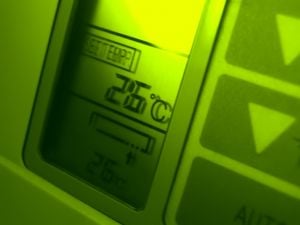
Just a slight increase in income leads many people to purchase air conditioners to improve their quality of life in the sweltering tropics and subtropics, where some three billion people live, according to the study in the Proceedings of the National Academy of Sciences, a peer-reviewed US journal.
Using data from 25 million electricity customers in Mexico to create a model of what may lie ahead for the rest of the world, researchers at the University of California, Berkeley showed that a two per cent annual increase in household income, combined with forecasts about climbing temperatures due to climate change, could lead to near-universal use of air conditioners.
"Under modest assumptions about income growth, our model implies that the fraction of households with air conditioning will increase from 13 per cent today to more than 70 per cent by end of century," said the study.
"These are large changes, implying $3+ billion in increased annual electricity expenditures and a 23+ million ton annual increase in carbon dioxide emissions," said the study, led by Lucas Davis at the Haas School of Business at UC Berkeley.
"Our results point to the enormous potential global impacts from air conditioning. We find large increases in electricity consumption on hot days, with essentially no offsetting impact from reduced heating on cold days."
Already, nearly 90 per cent of homes in the United States have air conditioning.
In comparison, India has four times the population, but also more than three times as many hot days, making that nation's total potential demand for cooling is 12 times than that in the United States.
"Air conditioning is still relatively uncommon in India and other low-income countries, but this is poised to change dramatically as incomes rise around the world," said the study.
Nations with the greatest potential for rises in air conditioning use are Bangladesh, Brazil, China, India, Indonesia, Mexico, Nigeria, Pakistan, Philippines, Thailand, the United States and Vietnam.
Researchers noted that sales of air conditioners worldwide have already "exploded" in recent years, with China buying up 64 million units in 2013, more than eight times as many as were sold in the United States.
But it is not just power consumption and power bills which are set to rise. Researchers predict that higher consumption of air conditioning and associated electricity will create more pollutants at an unprecedented rates.
Refrigerators and air conditioners release hydrofluorocarbons (HFCs), which can be thousands of times more potent than carbon dioxide when it comes to trapping greenhouse gases in the atmosphere and leading to global warming.
US President Barack Obama has called for a reduction in HFCs as part of his Climate Action Plan, and the US Department of Energy last week announced $8 million in grants for the development of new, more environmentally friendly air conditioning technologies.










































COMMENTS
Comments are moderated and generally will be posted if they are on-topic and not abusive.
For more information, please see our Comments FAQ